Japanese SEO Trends. Search Engine Optimization (SEO) is a crucial aspect of any website’s success in today’s digital landscape. It helps improve your website’s visibility and ranking on search engine result pages (SERPs), driving more organic traffic and potential customers to your site. However, like any other industry, SEO is subject to evolving trends and techniques. One such trend that has gained attention is the Japanese SEO hack.
What is the Japanese SEO Hack?
The Japanese SEO hack refers to a black hat SEO technique that attempts to manipulate search engine algorithms to achieve higher rankings. This technique involves creating low-quality, spammy content that targets specific keywords, often in multiple languages, to attract traffic from various regions.
This hack exploits search engines’ algorithms by taking advantage of the way they interpret and prioritize content in different languages. By targeting keywords in multiple languages, the hackers aim to increase their website’s visibility and traffic, regardless of the content’s relevance or value.
Japanese SEO Trends: Decoding the Algorithm, Dominating the SERPs
Gaining visibility on search engines is a global challenge, but adapting your SEO strategy for the Japanese market presents unique complexities. This in-depth guide from the SEO experts at iNFOTYKE will illuminate the crucial “hacks” to achieve top rankings and dominate the Japanese market. We’ll delve into the latest trends, address common pitfalls, and provide a step-by-step approach for your website’s success.
Understanding Japanese Search Behavior
To craft a killer Japanese SEO strategy, you must first understand how Japanese users search. Here’s what you need to know:
- Yahoo Japan Dominance: Unlike most global markets, Yahoo Japan maintains a strong search engine presence. Optimizing for Yahoo’s algorithms is crucial alongside Google.
- Japanese Keyword Usage: Japanese users tend to search with shorter, less specific keywords, requiring broader targeting strategies than strictly literal translations.
- Mobile-First Mindset: Japan boasts extremely high mobile internet usage rates. Ensure your website offers a flawless, mobile-optimized experience to capture this primary audience.
Japanese SEO: The Hacks You Need to Know
Keyword Research: The Kanji Challenge
- Japanese has three scripts: hiragana, katakana, and kanji. Your keyword research must encompass all three to capture search variations.
- Use tools like Google Keyword Planner and Ahrefs specifically for the Japanese market to identify top searched terms, their variations, and competition levels.
Content Is Emperor (With a Japanese Twist)
- High-quality content relevant to Japanese audiences aligns with global best practices.
- Localization goes beyond translation. Your content should be culturally relevant, resonating with Japanese customs and preferences.
- Prioritize long-form content over 1,500 words for increased value and authority.
Mastering Japanese Web Structure
- Traditional Japanese websites often have dense content with text-heavy layouts. However, modern SEO favors clean, user-friendly designs.
- Employ clear headers (H1, H2, etc.), whitespace, and images to break up content. Remember, readability is crucial for visitors and search engines.
Backlink Strategies for Japan
- Backlinks from reputable Japanese websites are gold within the Japanese SEO context.
- Cultivate relationships with industry blogs, forums, and relevant Japanese niche websites to secure backlinks.
- Quality is paramount; avoid link farms or suspicious directories.
Technical SEO Nuances
- Ensure your website adheres to Japanese technical SEO best practices:
- Use correct character encoding (UTF-8) to avoid display issues for Japanese characters.
- Optimize for crawling and indexing with clean sitemaps and robots.txt files adapted for both Google and Yahoo Japan crawlers.
- Page speed is crucial for Japanese users. Prioritize image optimization and fast, reliable hosting.
- Ensure your website adheres to Japanese technical SEO best practices:
The Fix: Overcoming Common Japanese SEO Pitfalls
- Keyword Stuffing: Overusing keywords for search rankings is a penalty magnet. Focus on natural integration and relevant variations.
- Machine Translations: While a tempting shortcut, automated translations often lack nuance and can result in unnatural phrasing, harming user experience and rankings.
- Ignoring Local Culture: Tailor your content, tone, and visuals to match Japanese sensibilities. Superficial localization won’t be enough.
iNFOTYKE: Your Guide to Japanese SEO Success
The Japanese market offers vast opportunities for businesses willing to tailor their SEO strategies. iNFOTYKE’s comprehensive services can guide you through every step:
- Japanese Keyword Research & Competitor Analysis
- SEO-Focused Japanese Content Creation
- Culturally-Sensitive Localization
- Japanese Link Building Campaigns
- Technical SEO Optimization
Harnessing the Power: Facts & Figures
- Japan is the world’s fourth-largest e-commerce market (eMarketer, 2023).
- Mobile e-commerce accounts for over 70% of online shopping in Japan (Statista, 2023).
- Over 90% of Japanese internet users access the web via smartphones (Statista, 2023).
Don’t let Japanese SEO complexities intimidate you. Contact iNFOTYKE today to craft a winning Japanese SEO strategy and unlock your potential in this lucrative market.





